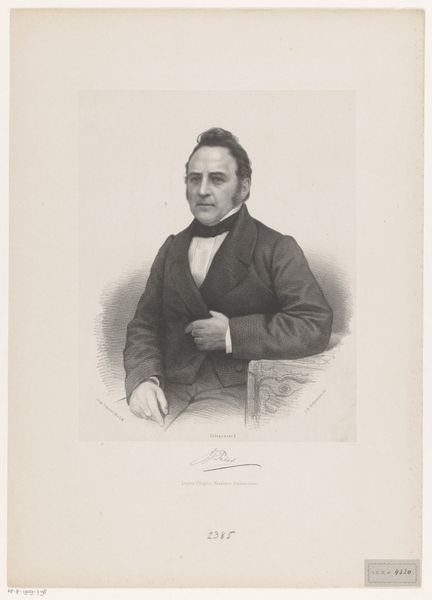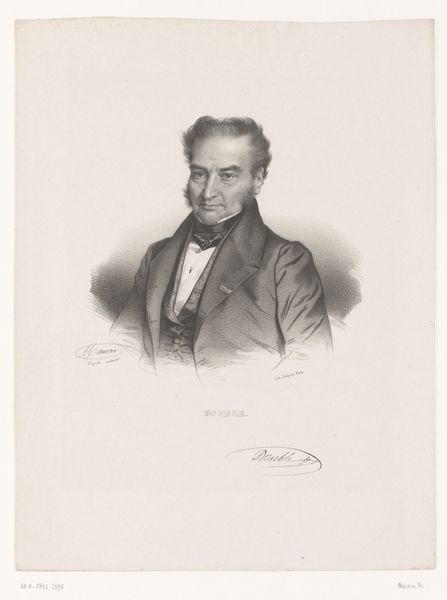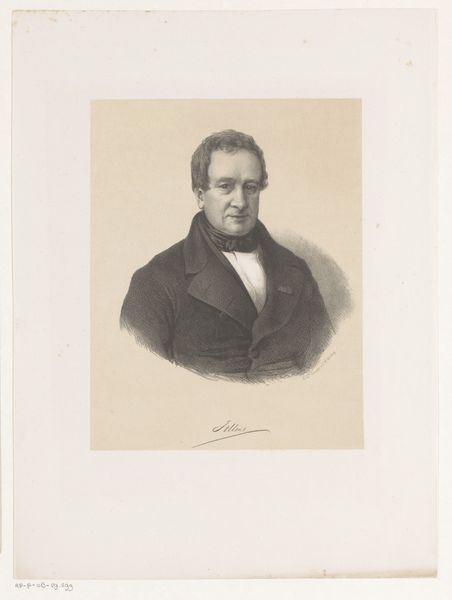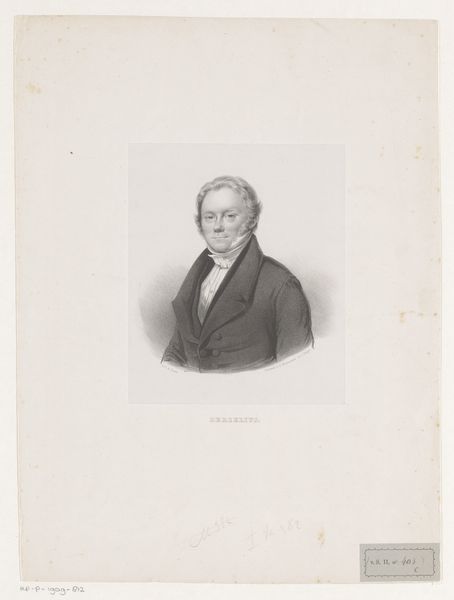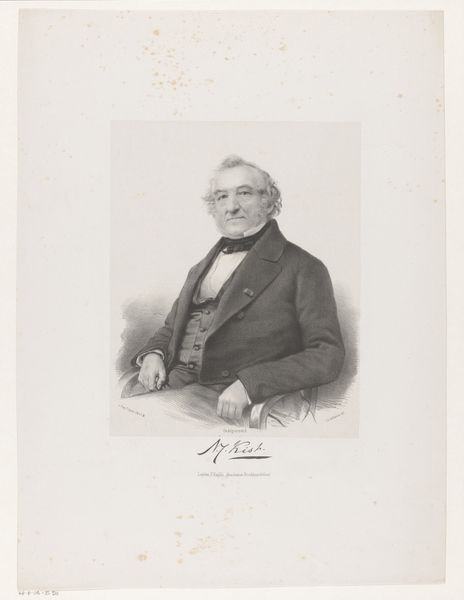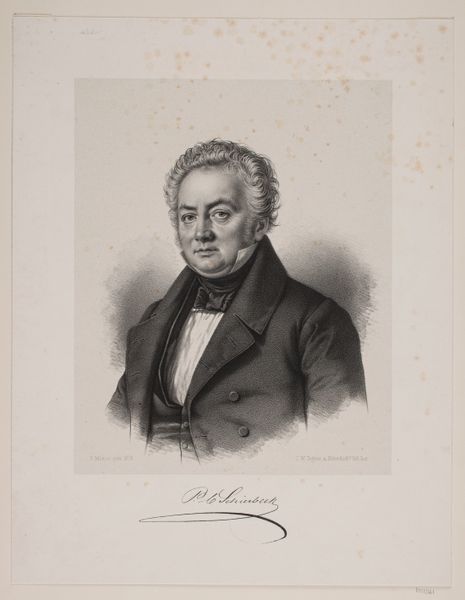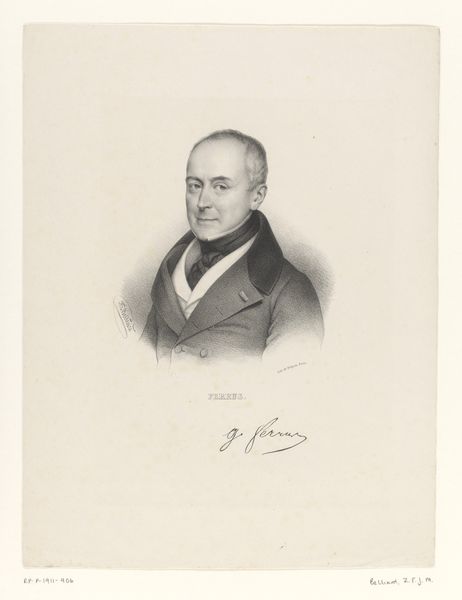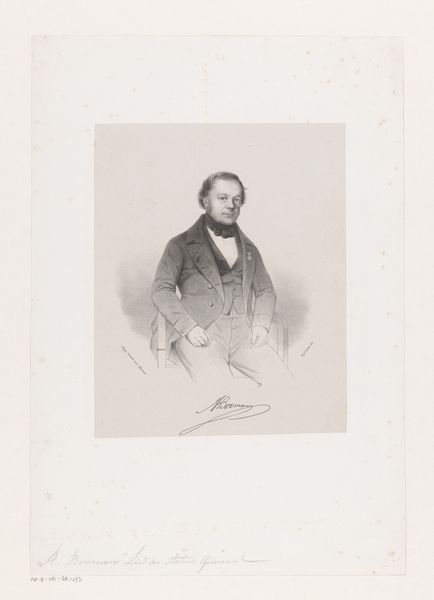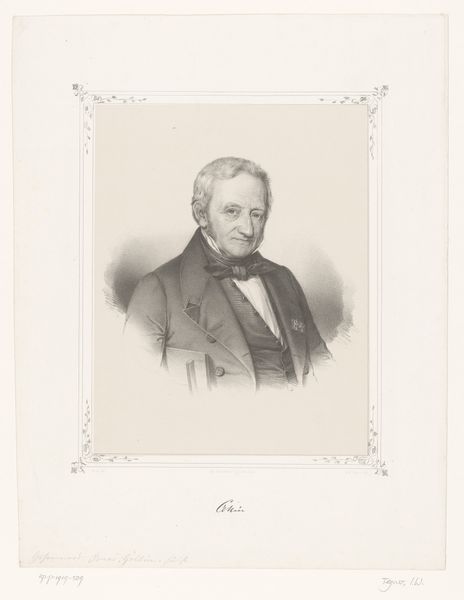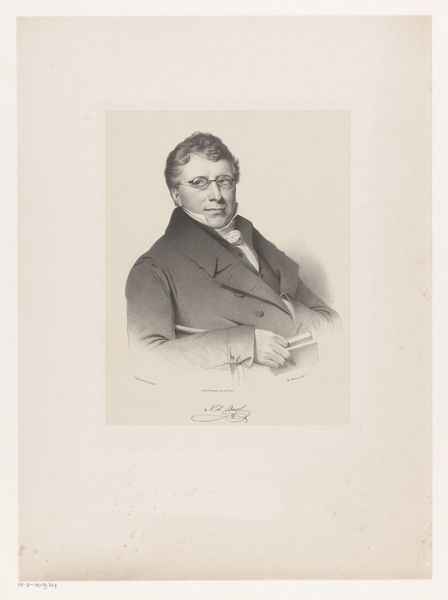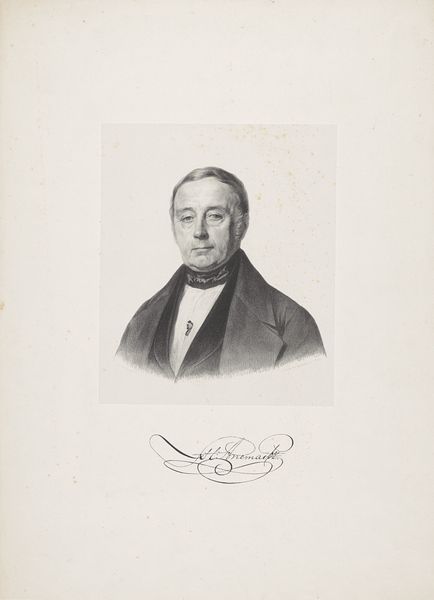
drawing, graphite
#
portrait
#
drawing
#
graphite
#
realism
Dimensions: height 470 mm, width 291 mm
Copyright: Rijks Museum: Open Domain
Editor: This graphite drawing, "Portret van Jeremias Cornelis Faber van Riemsdijk", dates from around 1851 to 1863 and is attributed to Johan Hendrik Hoffmeister. I’m immediately struck by its realism; there's a strong sense of individuality. How do you read this portrait in terms of its cultural context? Curator: This realism is key. In the mid-19th century, portraiture served as a tool for the Dutch bourgeois to assert their status and values. Hoffmeister's precise depiction of Riemsdijk isn't just about likeness. It's about visualizing power. How might the sitter's clothing – that respectable coat and bow tie – speak to these values? Editor: It definitely suggests respectability and formality, conveying a sense of established authority. Was this type of representation accessible to all members of society? Curator: Not at all. Portraits like this reinforced the social hierarchy. This work comes out of the Dutch colonial regime, so a reading would consider who had the means to commission art like this. Jeremias Cornelis Faber van Riemsdijk was a Governor-General, can you see the statement it would make to reproduce an image of him? Who do you think might see and consume art like this? Editor: Ah, right! So, it's less about pure representation and more about solidifying power structures. Maybe portraits like this were ways to signal inclusion or exclusion. Thank you. I had not considered this type of work in terms of inclusion before, and these new connections certainly help me to contextualize this work. Curator: Exactly! The art is never neutral.
Comments
No comments
Be the first to comment and join the conversation on the ultimate creative platform.
